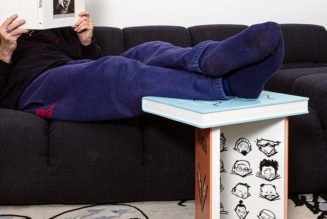
Frozen shoulder or Periarthritis is a commonly seen disease now. One main reason for shoulder pain can be frozen shoulders. Pain and reduced shoulder mobility are the main symptoms of this disease.
A condition that is common in 2-5 % of the population, it is seen more in women than men. It usually occurs between those in the age group of 40 and 60.
Reasons
Swelling of the inner lining of the joints and the subsequent differences are the cause. Lifestyle diseases and fluctuating lifestyle changes add to the condition. The real reason is still unclear. Diabetes, rheumatism, thyroid, heart attack, and chronic immobility of joints are all supposed to be the cause of frozen shoulders. The swelling of the ligaments inside the joints and the swelling of the muscles can be understood through the examination of this disease. It changes and produces more collagen, which is the major component of shoulder girdle muscles. This leads to shoulder immobility.
A disease that occurs without any specific reason or due to the presence of other diseases can be called primary frozen shoulders. According to studies, diabetes can increase the risk of this disease from 10-36%. Thyroid diseases or respiratory diseases can also be a cause of this illness. A secondary Frozen shoulder occurs due to injuries, bone fractures, or muscle damage.
Frozen shoulders can be controlled. Without the right treatment, it can last for years. There can be instances when you will suffer a complete loss of joint mobility. So it is important to control the diseases that lead to this. Keeping your diabetes and thyroid diseases in check can help in controlling this disease.
The disease factors
It can be divided into 4 main stages based on the severity of the disease, pain, and range of motion.
» Pain without immobility: The first stage is only pain without immobility. It seems to last for 1 to 3 months.
» Freezing stage: The pain gradually increases, and the joints start getting more immobile. This will last for 3-9 months.
» Frozen stage: The pain gradually decreases. Both spontaneous and assisted mobility of the joints are drastically reduced. It can last for 9 to 15 months.
» Tawing stage: The symptoms start to decline and mobility increases. It can last for 15-24 months.
Though you can diagnose the disease by physical examination, muscle and ligament issues can some sort of rheumatism and also show the same symptoms. Though bone variations do hint towards this condition, you might need to do an MRI scanning to be clear. Blood tests like complete blood count, C-reactive protein, Rheumatoid factor, and Uric acid. Sometimes muscle injuries that occur as part of the fall can also be seen as frozen shoulders. During this time instead of self-treatment, consult a rehabilitation physician.
Medicine and Surgery
Physiotherapy and medicines are part of the treatment. Injections and surgery are usually needed for everyone.
Medicines: Painkillers and medicines that reduce edema are usually given. Applying ointment and hot packs helps in reducing pain. Avoid lifting heavy items with your affected arm as well as adjust your sleeping position.
When medicines, physiotherapy, and exercises don’t work, bone injections, surgeries, and other treatments are usually done.
The pain is the main hurdle during the first phase of the disease. Painkillers, Electro therapy, and injections will help at his stage. When there is still no relief, the disease will go into the next stage which will be joints immobility. Mobilization exercises will be helpful during this period. By the time you reach the third stage, the pain will reduce, and the mobility of the joints will get better. During this stage, you should treat according to the variations of the patient’s movements.
Shoulder injection
Injection on the shoulder is another form of treatment. Steroid injections help in reducing pain as well as doing physiotherapy effectively. However, injections are done only after making sure the patient’s sugar levels are under control. Another treatment known as Hydrodilatation involves injecting a large amount of saline into the joints to prevent infection and expand the lining of the shrunken shoulder joint.
When medicines and exercises are ineffective, surgery is often recommended. When the patient shows no signs of improvement even after 3-6 months of treatment, surgery is done. Usually, Arthroscopic Capsular Release is done. When medicines can’t relieve pain, a nerve block is administered. The Suprascapular nerve is usually blocked.
About 90% of the patients get relief through medicines and exercises. Those who have restored their bone mobility are advised to exercise to strengthen their muscles. Treatment is as important as prevention. With proper control, a Frozen shoulder can be prevented. Proper shoulder exercises can also help in preventing frozen shoulders.
(Dr Vipin Vijay is Pain Rehabilitation Physician, Punalur, Kollam)








